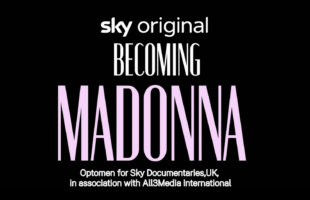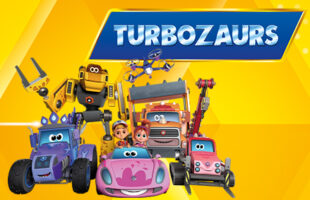In the continued proliferation of new satellite TV channels and increasing competition from several other ‘screens’ be they Internet, mobile phones or outdoor, TV as a mass medium in India is being challenged to brace itself for future. The role of TV in the overall communication strategy remains as critical as ever before. Especially considering the fact India has 219million households with 112million TV homes (64million color TV homes and 68million homes have access to cable and satellite TV). At the same time, it is critical to assess how media consumption trends featuring a ‘young’ India, where more than 60% of the population is below 25 years old, are going to evolve in the time to come. For example, according to the Internet & Mobile Association of India (IAMAI), the Internet user base grew by 40% (in 12 months, till last September) to reach 46million as per its report in December 2007. “Digital media is fast proliferating particularly among the youth in smaller cities. Just as intrinsic Indian content won on TV, Indian flavoured social networking sites will become popular with the youth in these parts. Also, with increasing new-format stores (in the retail sector), time spent outside the home will gradually increase. This will have its own impact on media consumption and hence on the media mix (used by) brands targeting these consumers,” Mediaedge:cia (MEC) India’s managing director Shubha George told Television Asia Plus. Starcom MediaVest Group CEO (South Asia) and CEO – Specialist Solutions (Asia) Ravi Kiran said the group has started referring to the future as the era of visual engagement. “This means, television in future will not be form bound to a CRT box or a flat panel on the wall. By referring to other screens, we are already recognizing the growing consumer need to be visually engaged no matter where they are. In a way, this is exactly what happened to music and radio,” Kiran said. “Critics may say that we are several years away from that future in India and I would agree with them. This means, within the box or LCD panel form, content owners have to innovate in quality, formats, category of programming and interactivity.” From an advertiser’s perspective, India’s largest automaker Maruti Suzuki’s senior media manager Shaswati Saradar said the change in audience behaviour especially in major cities and towns will be in two parts. “(It will be) largely restricted to certain echelons in society where the spread of digital media would be on the rise and therefore the time spent on new media options would increase. Accordingly, the ad spend targeted towards this audience will change. At the same time the traditional media is growing at a rapid speed – case in point – the regional dailies and the regional language news channels – hence the special interest genres would garner a share of the pie,” said New Delhi-based Saradar. Even as special interest channels are expected to gain, the leading genre in terms of audience share – Hindi general entertainment – seems to be under pressure to innovate itself. “Sometimes it appears to me that many TV programming folks, sitting in their fancy strategy sessions, are no longer in touch with changing aspirations and realities of viewers and their society. As a result, even in soaps, they show a life the viewers don’t connect with. That’s going to be one big obstacle for the industry. Programming people need to behave like Bollywood directors, and get back to understanding viewers,” said Starcom MediaVest’s Kiran. MEC’s George acknowledges that the days of double digit TVR’s (TV ratings) are over. “The word fragmentation has become a cliche, but is a reality that will stay. Connectivity and content will decide the success or failure of the channels. Increasingly, there will be flavour of the seasons in content; if today it is reality shows, the next season could be something else. Channels that stay ahead of the curve in picking up these consumer interests will be more successful.” Maruti’s Saradar said TV will continue to fragment in terms of audience. On the Hindi general entertainment genre (GEC), she said, “Post the initial spate of launches, we can expect that some of the channels will be able to sustain themselves and some may die down. However, television will still remain in the lead position – not to rule out the possibility of convergence leading to television consumption in a different medium – e.g. mobile TV. The implication for advertisers is to fine tune the channel mix befitting the marketing plan.” In terms of the audience share across all genres in 2007, Hindi GEC topped with 23% share (according to Mediaedge:cia, age 4+, socio economic class ABC, all-India). Other top genres included Hindi movies (10%), kids (6%), Hindi news (6%) and sports (3%). Four of the top five TV shows last year featured cricket matches from the inaugural 20 – 20 Cricket World Cup held in September 2007. The India-Pakistan final resulted in a 9.23 TVR on ESPN and the same match had a TVR of 8.01 on Star Cricket. The semi-final match between India and Australia in the same tournament rated 8.09 on ESPN and 6.31 on Star Cricket. The sole entertainment show among the top five was Kaun Banega Crorepati Special (the Hindi version of Who Wants To Be A Millionaire) aired on Star Plus, garnering a rating of 6.41. In terms of TV’s ad revenue share as a medium, according to Lintas Media Guide 2008, the pie is expected to grow dramatically. “With the number of channels likely to touch as many as 500 in the next two years, television as an industry is growing at a dynamic pace. Though the direct impact of this is going to be greater ad avoidance, but the time spent on watching any channels has moved up,” said Lynn De Souza, director, media services, Lintas Media Group. De Souza, reflecting on year 2007, said, “There are some surprises in store – ad spends have grown by a mere 3.5% in 2007 over 2006 reaching a figure of Rs. 17,356crores (US$4.4billion), largely due to a fall of 1% in TV expenditure, with large advertisers moving into more cost effective channels, slots and durations.” “While print continued to hold major share with 50% of the total media spend with Rs 8591crores (US$2.148billion), Internet, as a means of advertising saw a 43% increase in ad spend, compared to last year, reaching US$56million. Radio, cinema, and outdoor on the other hand capitalized on innovation and saw an increase of 28%, 16% and 17%, reaching US$132million, US$49million and US$266million respectively. Although very squashed, TV ad revenues showed a decline of 0.8% to US$1.692billion, as a result of competitive pricing offered by GECs to retain their market share,” she said. De Souza further added, “With increasing media reach amongst the rural masses and the urban youth shying away from mass media, 2008 is set to offer enormous advertising opportunities as well as tremendous challenges.” On Lintas’ assessment, Starcom’s Kiran said, “We are highly suspicious of this analysis. The truth being that the data Lintas has analyzed is available to anyone who buys TAM, so it’s not as if Lintas has any proprietary information. Every agency conducts a yearly exercise to understand which way the spend trends are headed, the methodology used by them may be different. Our investment company, India Media Exchange, uses its analysis largely for formulation of our investment strategy and recommendation to our clients. We believe that our methodology is more rigorous than anyone because it’s based on estimated CPRP (cost per rating point) rather than broad-spectrum discounting of reported spends.” Among the emerging media, the out of home (OOH) industry is expected to rise from US$25million in the present year to US$537million in 2010 at a growth rate of 17%. Aggressive expansion was witnessed in the OOH TV segment with 6,000 – 6,500 screens installed across the country in key cities across India in locations encompassing corporate parks to malls, multiplexes, restaurants, residential societies, cafes, bookstores, even pharmacies. “The retail boom, people spending more time out-of-home, and the benefits of audio-media has led to a spurt in this medium with players realising its benefits,” said OOH Media’s CEO Ishan Raina, whose company alone has set a target of 30,000 such screens by 2010. In fact, the industry has started seeing media convergence solutions (that are built around a network of LCD Displays deployed out-of-home and powered by broadband. These displays can interact with personal mobile devices in their vicinity through Bluetooth technology) to evoke response from consumers once they are out of home. So what does an advertiser like Maruti foresee when it comes to planning and buying? Saradar says, “(with reference to media convergence solutions) it is too early to have big time impact as Bluetooth technology even though available with a lot of consumers is used rarely by them. Even if used, it is in a restrictive form, more from fear of information pilferage. The other out of home solutions are a bit passive in nature, thus having less of audience involvement and not ensuring eyeballs for the advertiser.”
Ad – Before Content
Related Articles
Sky Documentaries reveals the official trailer for original feature documentary, Becoming Madonna
Fremantle, Abot Hameiri, IZZY, and YES partner to take Kugel global
Turbozaurs expands to Brunei and Myanmar
BBC World Service and CBC unveil new true crime podcast The Con: Kaitlyn’s Baby
TVU Networks Welcomes Mike Cronk as Vice President of Strategy
OneGate Media launches Spanish Crime AVOD YouTube Channel, Crime Para Mí








